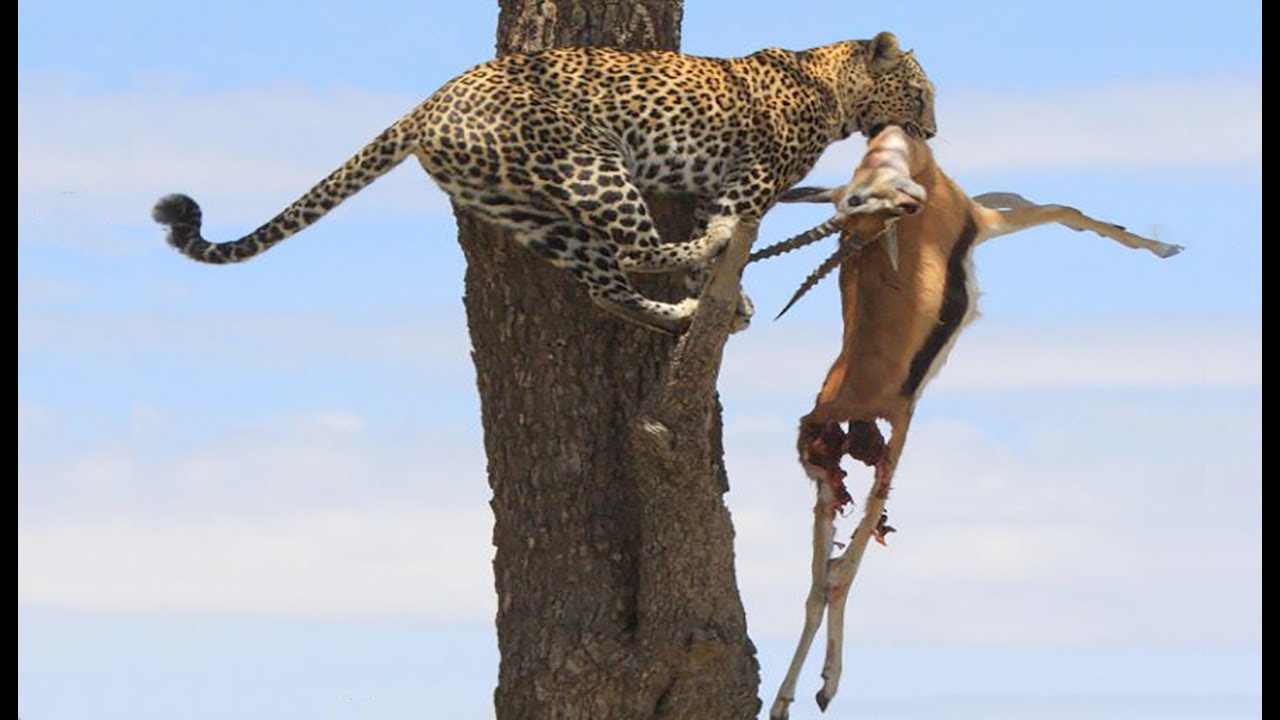Leopards are not social like other cats because its rare to find them in groups. But perhaps the most beautiful of all the African big cats. They prefer hunting late afternoon or in the nights.
Thank you for reading this post, don't forget to subscribe!The leopard are gifted with an elongated body, relatively short legs and a long tail. Leopards are the second largest cat after Lions. They weighs between 60kg and 70kg, standing about two-thirds of a metre tall at the shoulder. The life span of Leopards while in the wild goes up 15 years.
They are so tactical when hunting – leopards either ambush its prey or to stalk it. In either instance, it tries to get as close as possible to its target. It then makes a brief and explosive charge (up to 60km/h), pouncing on its prey and dispatching it with a bite to the neck. Leopards do not have the aptitude to chase their quarry over any kind of distance and will give up if the initial element of surprise is lost and the intended victim gets away.Leopards are capable of carrying animals heavier than themselves and will often drag their prey into the fork of a tree several metres off the ground. This tree “lardering” protects the carcass against scavengers and allows a few days of undisturbed feeding. Indeed, not a social animal: the leopard carry their prey and feed in the tree branches to avoid sharing with other animals like scavengers among others.
The big cats feeds on wildebeest, fish,antelope. Baboons and leopards appear to be ancient enemies. Leopards will often stalk baboons sleeping in the trees at night, and try to carry off one of the troop. There has been a case recorded in which a leopard that tried to attack a baboon in broad daylight was torn to pieces by the rest of the troop, which quickly came to the shrieking primate’s defense. Researchers believe that each individual leopard accounts for approximately 20 kills a year. Leopards eat on average about a third of the carcass of the animal they kill and this works out at roughly 400kg of meat per leopard each year. This means that leopards probably need just over a kilogram of meat a day. A leopard will often lick the fur off the carcass of its prey before it feeds, starting with the thighs or the chest. Leopards are highly adaptable creatures, capable of living in semi-desert conditions as well as dense subtropical bush. Their territories can also vary in size from 10 square kilometres, to several hundred square kilometres. The animals scratch trees and use urine to mark their turf. A male will defend his territory against other males, but will share territory with females. Male and female leopards spend only a brief time together while they are mating and then go their separate ways. The female will then raise the cubs on her own. Leopards can survive for long periods without drinking, satisfying all their moisture needs from their prey.
Leopards are rarely seen during day but very active at night so, its true to argue that, Leopards are nocturnals (Night Moving animals). Visit Uganda for wildlife safaris and try out your luck to see this elusive animal.

